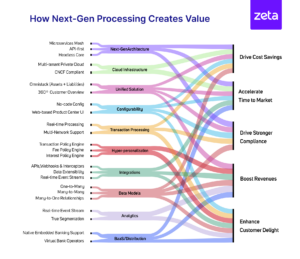During economic uncertainty, fintechs and all other credit providers face a very different landscape. The real risk of global and national recessions means that net interest margins are wafer-thin. Business as usual (BAU) costs are unusually high.
Ultimately thriving in an uncertain environment with shrinking margins, increasing competition, and demanding consumers is tough
One of the main ways fintechs reduce the impact is to cut costs, including looking at: people, property, technology, and external services.
But rather than cutting costs and hoping the impact won’t be detrimental, how can all credit providers take a strategic approach to cost reduction?
One little-known quick win is your purchased data.
There is an abundance of cost-savings to be made here, without even needing to switch bureaux or lose out on volumes or additional services.
How?
With data benchmarking. The challenge is credit providers don’t often know they can knock down the lack of transparency barriers with credit bureau pricing.
The bureaux don’t want you to know there is a way to compare other credit bureaux prices and services, and in fact how competitive your rates are in comparison to competitors (for the same data, from the same supplier).
This all changes with data benchmarking.
How data benchmarking works
When purchasing credit risk data, all credit providers meet the same significant barrier: a lack of transparency. It’s unclear what the going rates are, and it’s difficult to compare products.
But data benchmarking provides evidence-based insight into bureau data pricing and quality.
The result? Working with an unbiased and impartial contractor, you can see *exactly* how much you should be or could be spending on credit data purchases 👇
Let’s look at a recent real-life example using this major retail bank…
Data benchmarking in action
The challenge
This retail bank knew it was paying a lot for its data supplier, but with no published data pricing the bank was in the dark on exactly how it performed.
How data benchmarking helped
Through comprehensive data benchmarking analysis, they were able to see exactly how the bank’s data pricing measured up against other banking and financial groups for the same footprint of services.
Essentially, the data benchmarking provided robust insights that informed the retail bank’s negotiation strategy and approach:
-
Enabling the bank to gain a fair market price for each data set – so that they weren’t at a strategic disadvantage when marketing to and onboarding new customers.
-
Improved cost savings by comparing data spend with similar organisations to drive c.40% cost savings.
-
Addressed contract issues by understanding how other companies embed flexibility into contracts from the start.
-
And supported procurement by working with an external partner which saved the bank valuable time and resources and enabled more informed decision-making.
The results
-
Data benchmarking highlighted that the bank’s data price was inflated by double in some areas.
-
With this insight, the bank was in a strong position to request back-dated, lower pricing to recoup costs.
In summary
Today, many data contracts are anchored to how the bureaux have always done business—and often serve the needs of the bureau more than the credit provider.
Fintechs need to reverse this dynamic and make price transparency the starting point for process improvement.
To do so, they need to understand what competitors are paying for access to the same data, and how flexibility can be embedded within contracts. Instead of a major cost center, the credit data of the future will be a driver of innovation and customer satisfaction.
- ant financial
- blockchain
- blockchain conference fintech
- chime fintech
- coinbase
- coingenius
- crypto conference fintech
- fintech
- fintech app
- fintech innovation
- Fintextra
- OpenSea
- PayPal
- paytech
- payway
- plato
- plato ai
- Plato Data Intelligence
- PlatoData
- platogaming
- razorpay
- Revolut
- Ripple
- square fintech
- stripe
- tencent fintech
- xero
- zephyrnet











